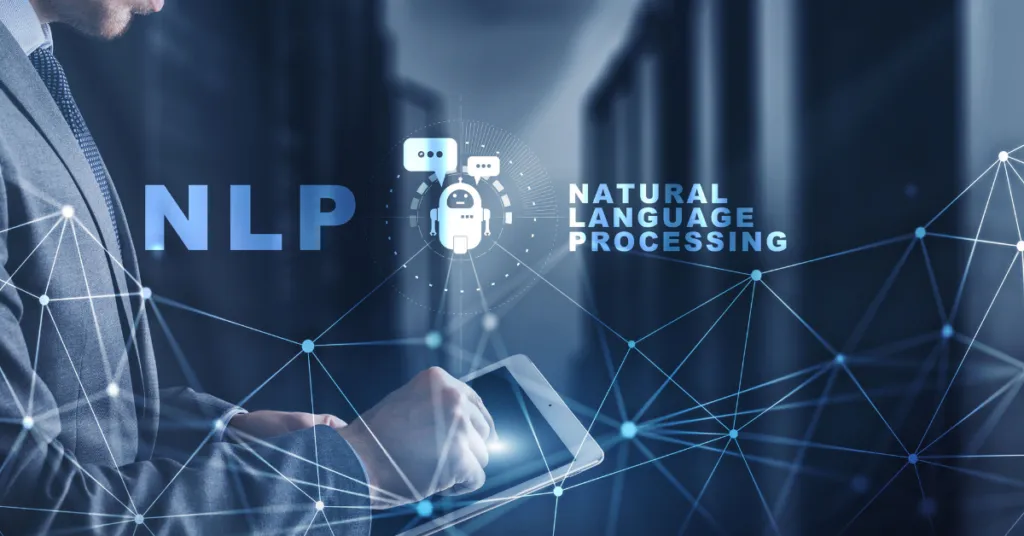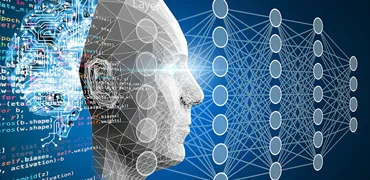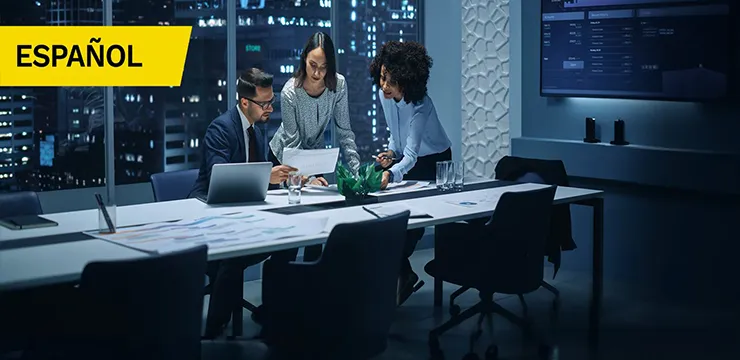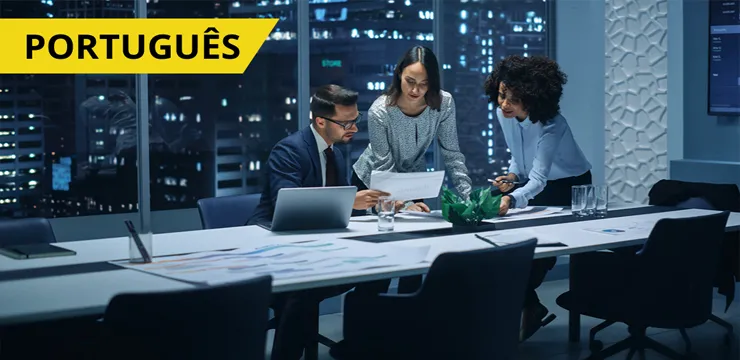What is NLP? How Machines Learn to Understand Us

The global Natural Language Processing (NLP) market is witnessing a significant surge, with projections showing an expansion from $18.9 billion in 2023 to $68.1 billion by 2028. This remarkable growth trajectory highlights the importance of what is NLP in today’s world. Considering this fact, this blog delves into the intricacies and applications of NLP, shedding light on how it is reshaping the interaction between humans and technology.
What is NLP?
To start with, exactly what is NLP? NLP stands for Natural Language Processing (NLP), a critical aspect of artificial intelligence in today’s digital era. In essence, it enables machines to interpret and respond to human language, bridging the gap between human interaction and digital comprehension. Moreover, NLP goes beyond simple word recognition, delving into the subtleties and context of our conversations. This field is an intersection of computer science and linguistics, playing a pivotal role in converting human language into formats understandable by machines, as seen in technologies like Siri and Google’s algorithms. Consequently, NLP is driving the development of sophisticated applications, reshaping our interaction with technology. Tools like chatbots and virtual assistants are becoming more relatable and efficient, significantly enhancing user experience.
How do Machines Learn Through NLP?

1. Data Preprocessing
Machines first encounter raw, often chaotic language data. Preprocessing, therefore, is about cleaning and organizing this raw data. This phase ensures that inputs are in a usable format, which is crucial for effective learning. For example, in sentiment analysis, preprocessing might involve removing irrelevant characters or correcting misspellings before analysis.
2. Pattern Recognition and Language Modeling
Subsequently, machines delve into pattern recognition, a fundamental aspect of NLP meaning. They scrutinize text to identify recurring patterns and structures. Language modeling follows, enabling machines to predict word sequences vital for understanding sentence structures and meanings. An example is autocomplete features in search engines, where machines predict the next word in a query based on common patterns.
3. Semantic Analysis for Deeper Understanding
Furthermore, semantic analysis is integral to NLP. Machines learn to decipher the meaning behind words and phrases, going beyond literal interpretations to understand subtleties and nuances. For instance, in natural language processing with Python, semantic analysis helps chatbots discern the intent of user requests, even when phrased differently.
4. Contextual Understanding and Intent Recognition
Moreover, machines develop the ability to understand context and intent. They analyze surrounding text and situational factors, enabling appropriate responses to various linguistic scenarios. A notable example is virtual assistants such as Siri, which interprets user commands accurately by understanding the context of the request.
5. Continuous Learning and Adaptation
Finally, the learning process is iterative. In essence, machines continuously learn and adapt, refining their understanding and responses based on new data and interactions. This ongoing improvement is evident in recommendation systems, which evolve to suggest more accurate content based on user interaction patterns.
ALSO READ: Gemini AI vs. ChatGPT: Top 5 Differences to be Aware of
What are the Key Applications of NLP in Different Industries?

A. Marketing and Advertising
1. Sentiment Analysis in Customer Feedback
In marketing, NLP applications play a crucial role in sentiment analysis. It interprets customer opinions, helping brands tailor their strategies. Thus, NLP ensures that marketing efforts align with consumer sentiments.
2. Trend Analysis for Market Insights
NLP also enables trend analysis. By identifying trending topics, businesses can stay ahead of market shifts, ensuring their marketing strategies remain relevant and impactful.
B. Finance
1. Predictive Analysis for the Stock Market
In finance, NLP is used for predictive analysis. In essence, it analyzes news and social media sentiment, providing insights for stock market predictions, a crucial aspect of financial planning and investment.
2. Fraud Detection in Transactions
NLP enhances fraud detection by identifying anomalies in financial transactions, helping prevent fraudulent activities and safeguarding both businesses and customers.
C. Health Care
1. Clinical Document Processing
NLP significantly aids in clinical document processing. It analyzes and interprets patient information, enhancing the accuracy and efficiency of medical record-keeping.
2. Predictive Analytics in Diagnosis
In health care, NLP also enables predictive analytics by assisting in disease diagnosis and treatment planning, contributing to better outcomes.
3. Patient Data Mining
NLP also facilitates patient data mining. In essence, this application aids in population health management, allowing for more effective strategies and policies.
ALSO READ: 10 Popular AI Applications in Real Life: A Comprehensive Guide
D. Human Resources
1. Resume Screening for Recruitment
In HR, NLP streamlines recruitment through resume screening. It matches candidates to job requirements, optimizing the hiring process.
2. Employee Sentiment Analysis
NLP also analyzes employee sentiment. This application helps understand workforce dynamics, contributing to better employee engagement and satisfaction.
E. Education
1. Automated Grading Systems
In education, NLP is used for automated grading. For example, it provides quick and unbiased evaluation of student assignments, enhancing the efficiency of educational assessments.
2. Plagiarism Detection
Additionally, NLP aids in plagiarism detection and ensures academic integrity, which is one of the critical aspects of ethical academic practices.
F. E-commerce and Retail
1. Product Recommendation Systems
In e-commerce, NLP powers product recommendation systems. It personalizes shopping experiences, leading to increased customer satisfaction and sales.
2. Customer Support Chatbots
NLP enhances customer support in retail, and chatbots provide one of the finest and everyday examples of NLP. Chatbots offer timely assistance, improving the overall shopping experience for customers.
Given the scale of its applicability across industries, it is no wonder that 77% of businesses currently engaged in natural language processing projects intend to boost their spending in this area over the next 12 to 18 months, as The 2023 Expert NLP Survey Report on Trends Driving NLP Investment and Innovation suggests.
ALSO READ: Top 10 Best Practices and Insights to Prepare You for Industry 4.0
What are the Challenges and Limitations of NLP in Machine Learning?
1. Contextual Understanding
Understanding context poses a significant challenge to what is NLP and how it could effectively work. Machines often struggle to interpret meanings based on context, leading to potential misunderstandings. For example, the same word can have different meanings in different sentences, complicating the NLP machine learning process.
2. Handling Language Diversity and Ambiguity in NLP
Language diversity and ambiguity also present hurdles for appropriate meaning interpretations by machines. Additionally, they need to navigate the inherent ambiguities in human language, a task that is complex and nuanced. Hence, machines must be trained on a wide array of languages and dialects, which can prove challenging.
3. Irony and Sarcasm Detection in NLP
Irony and sarcasm detection is another challenge. Machines may misinterpret sarcastic remarks as genuine statements. Consequently, training models to recognize these nuances requires sophisticated algorithms and extensive datasets.
4. Dealing with Homonyms and Synonyms in NLP
Homonyms and synonyms add complexity to NLP. Words with the same pronunciation but different meanings (homonyms) and words with similar meanings (synonyms) can confuse NLP systems, requiring advanced linguistic analysis to differentiate them.
5. Errors in Text and Speech Recognition in NLP
Errors in text and speech, such as misspellings or mispronunciations, can impede NLP effectiveness. While autocorrect and grammar correction tools address common mistakes, they often don’t accurately capture the writer’s or speaker’s intent.
6. Adapting to Colloquialisms and Slang in NLP
Colloquialisms and slang present unique challenges in NLP. Since these informal expressions often lack standard definitions and vary across cultures, they necessitate continuous updates and training of NLP models to stay relevant.
7. Domain-Specific Language Processing in NLP
Processing domain-specific language is crucial for NLP in specialized fields like health care or law. Each domain has its unique terminology and context, requiring tailored NLP solutions.
8. Addressing Low-Resource Languages in NLP
Low-resource languages are often underrepresented in NLP applications. For example, many languages, especially those spoken by smaller populations, lack sufficient data for effective NLP machine learning, leading to gaps in language processing capabilities.
ALSO READ: Reinforcement Learning in Machine Learning: Top 10 Applications
How Does NLP Help Improve Chatbots and Virtual Assistants?
1. Personalizing Interactions
NLP allows chatbots and virtual assistants to understand the structure of human language. It considers not just words but also their particular structure, allowing chatbots and virtual assistants to comprehend the subtleties of our queries. Consequently, this capability transforms digital interactions into personalized experiences.
2. Enhancing Empathy in Digital Conversations
Additionally, NLP brings empathy to digital conversations. For instance, chatbots and virtual assistants can now detect sentiment and engage in natural, empathetic dialogues. This advancement makes interactions with machines more relatable and human-like, enhancing the user experience significantly.
3. Providing Multilingual Support
NLP is capable of breaking language barriers in communication. Hence, it equips chatbots with multilingual capabilities, ensuring users worldwide can interact without linguistic limitations.
4. Facilitating Continuous Learning and Improvement
NLP is characterized by continuous learning. NLP machine learning-powered chatbots and virtual assistants constantly evolve, improving their language understanding and response accuracy with each interaction. This ongoing improvement is a testament to the transformative power of what is NLP in AI communication.
5. Boosting Efficiency and Scalability
Lastly, NLP enhances the efficiency and scalability of digital assistants. They become adept at handling large volumes of information, providing instant and accurate responses. This efficiency proves vital in domains like customer support and e-commerce, showcasing the broad impact of NLP.
Knowing what is NLP helps to truly understand its vast potential in a tech-first world. Indeed, the burgeoning field of NLP is set to redefine the landscape of human-machine interaction, which is evident in the fact that the global intelligent virtual assistant market size is expected to soar to $41.6 billion by 2028. For those keen on delving deeper into what is NLP, Emeritus’ artificial intelligence courses and machine learning courses offered by globally ranking institutions provide a one-stop solution.
Write to us at content@emeritus.org






















































